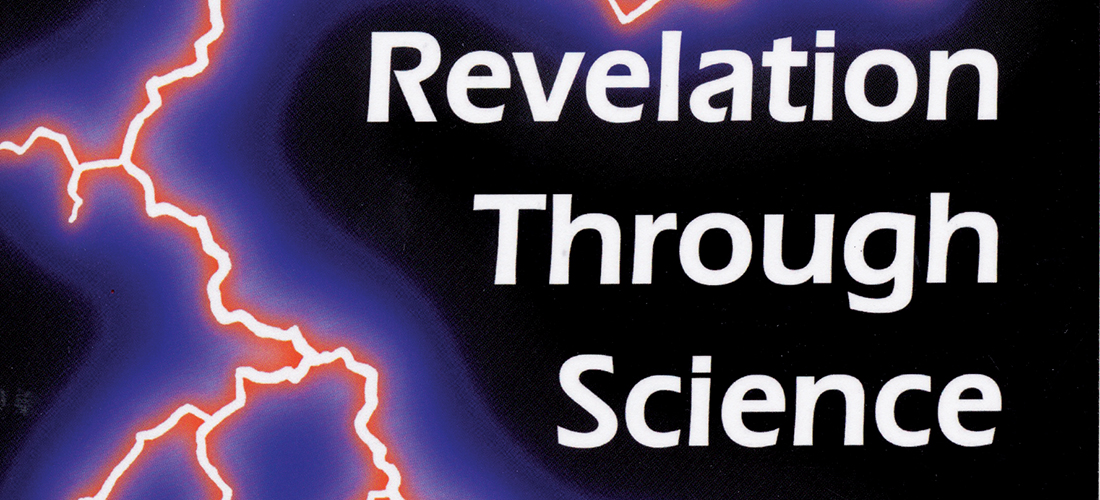
Martin’s Mixture
A former two-time governor argues that science points to God
By D.G. Martin
What would be rarer than a total eclipse of the sun?
My answer: a serious book about science or religion written by a former governor of North Carolina or any other state.
We had our solar eclipse in August, and our former two-term governor Jim Martin has given us a serious book on both science and religion.
As the son of a Presbyterian minister and a Davidson College and Princeton University trained chemist, Martin is a devoted believer — in both his religion and the scientific method. His book Revelation Through Science: Evolution in the Harmony of Science and Religion is his effort to show that the discoveries of science pose no threat to Christianity or any other religion.
He is a champion of the scientific method and, without apology, endorses the discoveries his fellow scientists have made, including the Big Bang theory of the origin of the universe and basics of the Theory of Evolution.
But, as a lifelong Christian, he believes the Bible is “the received word of God, the Creator and Sustainer of the universe and of any life it holds, on Earth or elsewhere. I believe the Bible is our best guide to faith and practice.
“I believe there is, and can be, no irreconcilable conflict between science and religion, for they are revealed from the same God. Even more than that, as a Christian, I believe that God is most clearly revealed in the life and teaching of Jesus Christ. Furthermore, I firmly believe that a loving God intended us to have the capacity to observe and interpret nature, so that we would grow in understanding the majesty and mystery of His creation and all that followed.”
How can Martin reconcile his scientific truths with the biblical account of a six-day creation or with the related belief that the Earth was created about 6,000 years ago?
He admits that has not always been easy. When he was active in politics and serving as governor from 1985 through 1993, he would sometimes avoid discussion of these questions. For instance, once during his time as governor he visited the small town of Hobucken on Pamlico Sound. He stopped at the local fishing supply store at R. E. Mayo Fish & Supply and saw a “monstrous skeletal whale head standing right outside the store.”
Martin remarked to some of the local people, “Wow! That whale must have lived and died there millions of years ago!”
In his book, Martin writes that everything got quiet. Then, one person responded, “No, sir, we reckon she couldn’t have been there more’n six thousand years!”
Martin admits, “I did not stand my ground and debate the age of the Earth with these fine gentlemen. I knew what I knew, part of which was that they knew what they knew, and this debate was not winnable.”
Now Martin is ready, not to debate, but to explain that science’s conclusions about the time of creation (13.7 billion years ago) and the age of the Earth (4.5 billion years ago) are firmly based. More importantly for him, they are not in conflict with religion, including the creation accounts in the Book of Genesis.
In his 400-page book he lays out a seminar for the “educated non-scientist,” explaining the awesome complexities and orderliness of our world. He gives details of the sciences of astronomy, physics, biology, evolution, geology, paleontology, organic chemistry, biochemistry and genomics, including efforts to spark living organisms from inert chemicals.
With every scientific advance or explanation of how the world came about and works now, Martin says there is a further revelation from the Creator.
Does he assert that these advances prove the existence of God?
No, but throughout the book he points out what he calls “anthropic coincidences” that made for a universe that “was physically and chemically attuned very precisely for the emergence of life, culminating thus far in an intelligent, self-aware species.”
Recently he explained to me the importance of the power of gravity or the “gravity constant.” “If the pull of gravity were slightly stronger,” he said, “the universe would’ve collapsed. If it was slightly weaker, there’d be no stars, the same, because it had to be precisely balanced with the energy and power of that burst of expansion from the beginning, so astronomers therefore conclude that there was a beginning, just as in Genesis 1:1, In the beginning, Pow.”
Martin explained that, like gravity, “there are a number, about a half dozen, physical constants, all of which are precisely balanced for us to be here. One astronomer said, ‘It’s as if the universe knew we were coming.’ All of this implies purpose, and science cannot ask questions about purpose. Science cannot get answers about purpose, but that doesn’t mean there’s no purpose. It’s clear from this evidence that we didn’t get here by unguided chance. In that way, science points to God. In that way, science tells us that God is. Science does not tell us who God is. It doesn’t differentiate between different denominations, different theological traditions, or insights, or reasonings, but it does support all of them in that sense.”
If these discussions of science and religion are too complicated for readers, they should not put down the book before reading its final chapter in which Martin describes his personal journey of faith, study, service, and tolerance and respect for the opinions of those who see things differently.
As a political figure and former Republican governor, does Martin share his thoughts on science and politics?
He asks his readers, “Which political party is anti-science?”
Their answer, he says, would likely reveal their political orientation.
Martin agrees with Alex Berezow, founding editor of the “RealClearScience” website. Berezow asserts that partisans in both parties are “equally abusive of science and technology, albeit on different topics and issues.”
Martin confesses that several positions held by many Republicans are unsustainable in light of the findings of science. He notes that some Republicans believe global warming is a myth.
But, he writes, “Denial is indefensible.”
He continues, “Instead of futile denial that excessive carbon dioxide from combustion of coal and oil contributes to global warming, Republicans should let science be science.”
Anyone who thinks this statement represents Martin’s complete acceptance of a liberal environmentalist position on clean energy would be misled. His response to the carbon crisis is increased reliance on nuclear power because wind and solar alternatives can only make minor contributions to our energy needs. In bold print he asserts, “If we cannot accept nuclear power as an irreplaceable part of the solution, how serious are we about the problem?”
Whether or not you agree with Martin’s views on religion, science or politics, his book is a welcome gift to a country that is in great need of what his book gives us: clear, thoughtful, and respectful discussion of important, misunderstood, and controversial topics.
Too bad such books are as rare as a total solar eclipse. PS
D.G. Martin hosts North Carolina Bookwatch, which airs Sundays at noon and Thursdays at 5 p.m. on UNC-TV.





